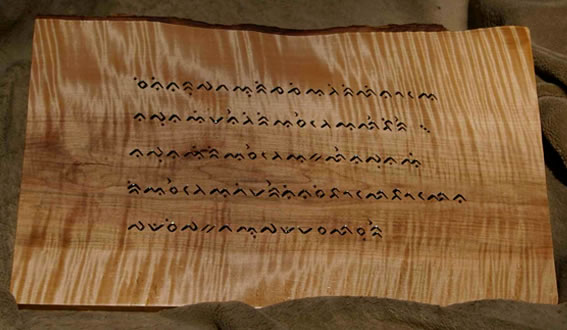Today we have a guest post by Tim Brookes

The Endangered Alphabets Alphabets Project is expanding in several directions at once, and at times my head spins.
The original exhibition of 14 carved version of Article One of the UDHR (thanks to Omniglot) is venturing farther and farther afield. It’s currently in the spacious and airy Sachem Library on Long Island, and is about to be the subject of a profile in the New York Times. You can also find a nice piece in The Atlantic.
The Endangered Poem Project is nearing its goal of having my short poem (on the importance of traditional scripts) translated into 20 endangered writing systems. Ten of those are already carved. This part of the project got a huge boost recently while I was visiting Bangladesh, and made contacts that should produce no fewer than three versions in indigenous languages/scripts from the Chittagong Hill Districts: Chakma, Mro, and Marma.
The most ambitious feature of the Alphabets project, though-and the one that has me sweating-is the World Tour fundraiser. When I started this whole enterprise I thought it would be amazing to be able to take the carvings back to their various countries of origin, so as to raise awareness and discussion on the issue of cultural preservation. Needless to say, I can’t afford to do that on my own, so I’m trying to raise funds on Kickstarter.com to do so. I could really, really use some backing on this, especially as the fundraising window closes in three weeks. Anyone who is interested in helping out (and each backer receives a reward for support) should go to Kickstarter.com. Or at least forward the link to anyone who might be interested.
Thanks!
Tim Brookes
